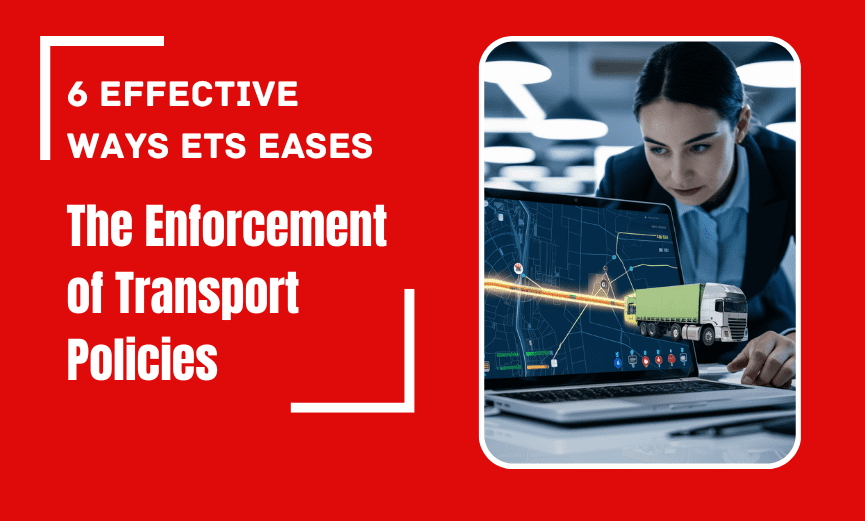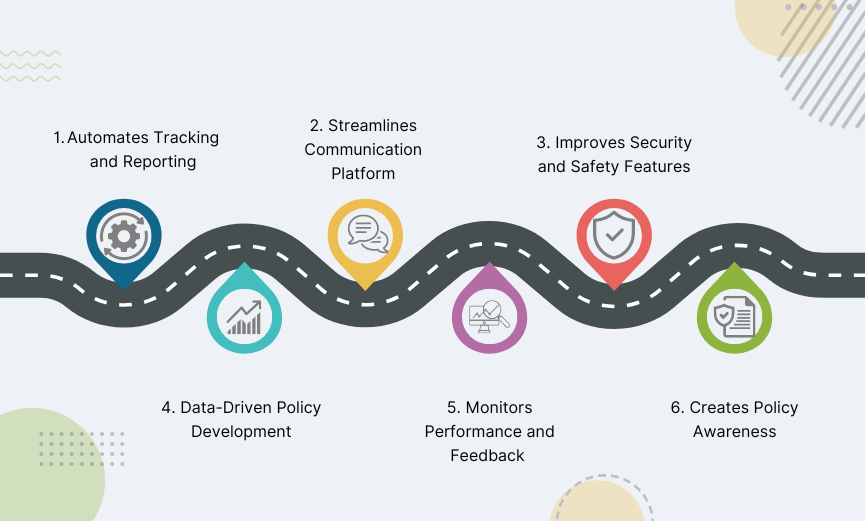6 Ways In Which An Employee Transport Solution Eases Enforcement of Transport Policies

A reliable and efficient employee transportation system is no longer a perk, it has become a necessity. According to a white paper published on Springer Link, commuting to and from work is a major part of an employee’s life, and it can affect their well-being, directly impacting productivity.
Smooth and hassle-free commuting also benefits the company by optimising fleet, reducing fuel consumption and minimizing the risk of accidents.
However, to get these benefits, a company must enforce transport policies, which is often challenging. In this article, we’ll explore how implementing an Employee Transport Solution (ETS) can help you enforce transport policies with ease.
What is an Employee Transport Solution?
An ETS is a comprehensive system designed to manage and optimize the transportation of employees to and from their workplaces. It typically includes features like route optimization, real-time tracking, automated scheduling, and safety measures to streamline daily transportation.
Regardless of the size of the organization, an ETS is essential to improve daily transportation, enhance operational efficiency, ensure employee safety and significantly reduce transportation-related costs.
By providing unified control and comprehensive monitoring, an ETS ensures compliance with company policies, thereby fostering a more organized and reliable employee transport system.
Challenges Faced to Enforce Policies Without an ETS
Without an ETS, enforcing transport policies can be a daunting and error-prone task. Here are some key challenges organizations experience:
Lack of Centralized Control and Monitoring
Managing multiple transport providers and routes without a centralized system leads to inefficiencies and policy breaches.
Inconsistent Compliance
Employees may not adhere to set guidelines for transportation, leading to punctuality and attendance issues.
High Administrative Burden
Manual coordination of transport schedules and routes increases the workload on HR and administrative teams.
Safety and Security Concerns
Without real-time tracking and safety features, ensuring employee safety during commutes becomes difficult.
Employee Dissatisfaction
Irregular and unreliable transport options can lead to dissatisfaction and decreased productivity.
6 Effective Ways ETS Eases the Enforcement of Transport Policies

An ETS offers a robust platform for managing employee transportation and enforcing policies effectively. Here are six ways it helps organizations manage their transport:
1. Automates Tracking and Reporting
ETS automates the collection of ridership data, including boarding times, routes used, and employee IDs. This data can be used to identify potential policy violations, track trends, and identify areas for improvement.
Companies that implement an ETS experience a significant reduction in policy violations due to improved tracking and accountability.
2. Streamlines Communication Platform
An Employee Transport Solution acts as a hub for all transport-related information. Employees can receive real-time updates on policy changes, schedule adjustments, and any delays or disruptions.
Therefore, it becomes convenient for the workforce to plan things accordingly, which reduces the stress associated with daily commuting.
3. Improves Security and Safety Features
Reliable ETS systems integrate features like GPS tracking, emergency alerts, safe-reach calls, escort options for women employees and driver verification. This enhances employee safety during their commute by allowing companies to monitor vehicle location and respond to any emergencies promptly.
4. Data-Driven Policy Development
Data collected through ETS can be used to analyze ridership patterns, identify areas with high demand, and assess the effectiveness of existing policies. The data-driven approach allows companies to develop more efficient and employee-centric transport policies, which are easy to enforce.
5. Monitors Performance and Feedback
Companies with an efficient Employee Transport Solution can monitor the performance of transport services and collect employee feedback. The information gathered by monitoring the essential metrics helps identify areas for improvement and ensures that transport services meet employee expectations and policy standards.
Regular performance reviews and feedback mechanisms with the help of an ETS contribute to the overall efficiency and reliability of the transport system.
6. Creates Policy Awareness
With the help of an ETS, organizations can maintain awareness of transport policies among employees. Through regular updates and notifications, employees are informed about any changes or reminders regarding transport guidelines.
The proactive communication ensures employees are aware of their responsibilities and the expectations set by the company, leading to better policy compliance.
Conclusion
Implementing an ETS offers numerous benefits beyond just enforcing transport policies. It can improve employee satisfaction, reduce absenteeism, and contribute to a more sustainable work environment.
The data collected through ETS can be used to continuously refine the system and ensure a positive return on investment (ROI) for companies. With the growing importance of employee transportation, an ETS is no longer a luxury, it’s a strategic investment in a more efficient and employee-friendly work environment.
Need an Employee Transport Automation Solution for your company? Contact us today for more details.
Quick Read: afm-empowering-fleet-managers-for-efficient-ad-hoc-cab-rental-spot-rental-management/